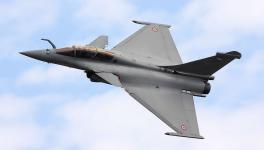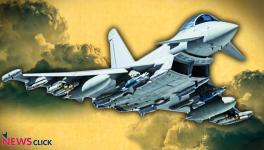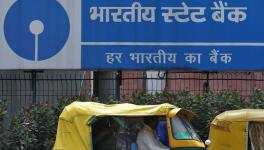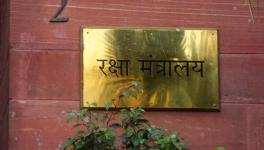Strategic Partnership Model for Defence Acquisitions: Ready for the Next Scam?
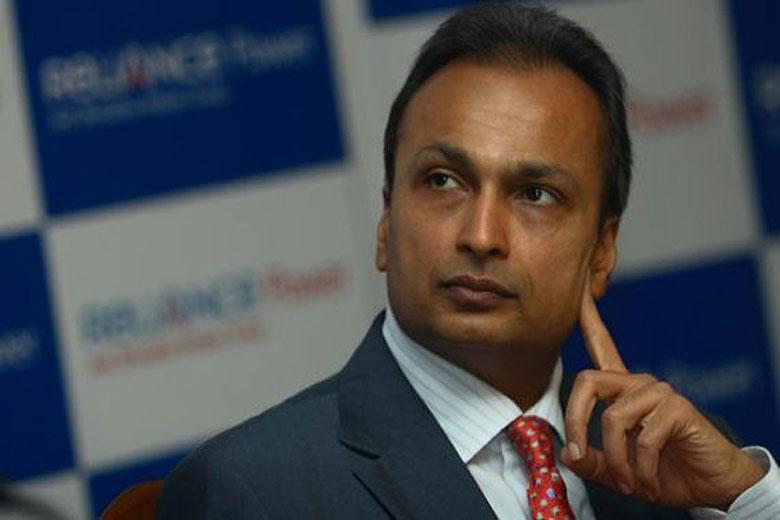
The Defence Acquisitions Council (DAC), the apex decision body for all the domestic and international defence acquisitions, as well as for indigenous R&D, finalised guidelines for the vaunted Strategic Partnership (SP) model under which foreign manufacturers would tie-up with identified Indian partners for manufacturing the concerned platforms in India. The DAC, chaired by the Defence Minister, also drew up platform-specific guidelines for the forthcoming acquisition of Naval Utility Helicopters (NUH), which would be the first project taken up under this model.
Earlier, the focus of this model was specifically to expand and support private sector participation in domestic defence production in a space hitherto dominated by the public sector, and the model itself provided only for private entities. Under pressure from different quarters in India, and given the obviously weak track record and capabilities of the private sector in defence manufacturing, the SP model also now accommodates partnerships between foreign OEMs (Original Equipment Manufacturers) and public sector entities in India. The model is another of the many “reforms” put in place to improve and manage the notoriously inefficient and ponderous process of defence acquisitions. These procedures and institutional structures have been frequently modified in an effort to further streamline processes, along with other policy initiatives such as higher limits for FDI in defence, the ‘Make in India’ programme etc.
Also Watch: Was Rafale a Transparent Deal?
The overall aim of all these measures is supposedly to speed up acquisitions, make them more transparent, check corruption and build in various checks and balances. However, the procurement process continues to be shambolic, with cumbersome procedures and needless delays. Defence acquisitions continue to be ad hoc, and lacking a long-term, strategic vision with effective leadership, defeating one of the major goals of increasing efficiency in decision-making.
The other major goal of increasing transparency has been a visible casualty, as evidenced in the Rafale deal, with murky details emerging by the day. Of what use are all the procedures and checks-and-balances, if a fully thought-through decision based on extensive field trials could be casually set aside one fine day by the top political leadership, without any consultations with the defence minister, concerned service chief or the standing bureaucracy? India, and the world, then watched with utter shock and amazement as the lucrative 50 per cent offsets deal went to a debutant Indian company with no experience in manufacturing; let alone in the highly complex aeronautics industry!
Against this background, the SP model, mainly aimed at promoting private sector entities in India, can now only arouse more suspicions. What potential future scams lurk in the shadows?
The Model
The SP model guidelines closelyfollows the relevant Chapter VII of the theDefence Procurement Policy 2017 which had presented detailed contours of the model. Four key platforms have been identified for being taken up under the SP,namely fighter aircraft, helicopters, submarines and armoured fighting vehicles and main battle tanks.
The guidelines state that the objective is to provide a fillip to self-reliance and ‘Make in India’, and that strategic partnerships will emphasise transfer of niche technologies and depth of technology transfer. Empowered Project Committees for each acquisition are expected to ensure this and timely delivery etc.
Question is if these are merely pious statements or they are serious intentions. If transfer of technology was indeed a cornerstone of India’s defence procurement policy, then any previous or current tender could stress this aspect with a clear statement that this would constitute a determining factor for selection of the winning platform. It does not require a special Guideline or Policy Document! Interestingly, the guidelines say that global arms majors would be incentivised if they make India their regional or global hubs for manufacture and export of their platforms. It is not clear what form such incentives could take.
Also Read: Military Agreement With the US: COMCASA is On Again
In any case, the guidelines go on to say that, in the interests of developing Indian companies with expertise and scale in each of the sectors, the government will identify only one SP per sector. The guidelines leave some wiggle room for the government, presumably in case of complaints about monopolisation of a sector by a particular company, by stipulating that sub-segments may also be identified if necessary.
Two aspects of the guidelines deserve attention. First is the idea that the SP would be selected or identified by the government, of course on the basis of capabilities and infrastructure and other criteria, including tie-ups with foreign OEMs. If government is responsible for selecting the SP, then low-credibility claims cannot be made, such as that Dassault, which had almost completed tie-up with Hindustan Aeronautics Ltd (HAL) for manufacture of the Rafale in India, had on its own selected the completely unknown Reliance Aerostructure (of Anil Ambani’s group) for the compulsory offsets! It is also not clear whether global arms manufacturers can have more than one Indian SP and whether pre-existing tie-ups alone would be considered. This has several implications. For instance, in the forthcoming re-issued fighter tender, will the selection of the winning aircraft be done independently, and then a tie-up will be stitched together with an already identified SP, or will the selection winner take into account the OEM’s pre-existing tie-up with an Indian SP, taking into consideration the capabilities of the latter? A case in point could be Tata’s tie-up with Lockheed Martin for the F-16 or Adani’s tie-up with Saab for the Gripen? Will Adani’s influence with the government swing the deal in its favour, or will the US and Lockheed Martin’s clout swing it for the F-16 made in India in collaboration with the Tata’s? Will the tail wag the dog? Or will the government retain the power to impose an SP on the winning aircraft OEM?
Secondly, if only one Indian SP is identified for each segment, this opens up the possibility of, for instance, Reliance Aerostructure emerging as a private sector monopoly in the fighter aircraft segment. Will this shut-out OEMs other than pre-existing Reliance partners from the Indian market? If that is not considered desirable, how many other Indian SPs would be identified?
Clearly, there is plenty of scope for ambiguity, subjective decision-making and cronyism here! Given the fact that almost all Indian companies have virtually no prior experience in armaments manufacturing, other criteria must be adopted, such as experience in manufacturing, advanced technology, precision manufacturing etc., along with track record in financial matters, timely delivery, meeting of contractual obligations etc. If such criteria were to be objectively applied, Reliance Aerostructure may find little favour, for not having any experience in relevant sectors and for the Group having a huge debt burden or abandoning the Airport Express Metro project in Delhi. Or maybe none of this matters when, for example, a complete unknown in the educational sector with not even a foundation stone for infrastructure can be recognised as an institution of eminence!
Naval Helicopters
The DAC also kicked off the acquisition process for ship-borne Naval Utility Helicopters (NUH), one half of the Navy’s helicopter procurement list, the other being a requirement for ship-based Naval Multi-Role Helicopters (NMRH) which would be more heavily armed with special emphasis on anti-submarine warfare.
With so many other items now being procured, these helicopters are long pending requirements of the Indian Navy (IN). India has been making do with ageing or end-of-life Westland Sea-King or Chetak (originally named Alouette III) utility helicopters made by HAL under license from Sud Aviation- Aerospatiale of France. The Sea-Kings have now been phased out. HAL has over the years made more than 300 Chetak light utility helicopters, with over 200 of them having been transferred from the Air Force to the Indian Army Aviation Corps and used for light transport, med-evac etc. duties, with the Air Force and Navy having lightly armed versions. The Navy also operates a few Russian made Kamov-28 and Ka-31 choppers.
Currently, the Navy has a huge projected shortfall of close to 235 helicopters, which is almost a crippling deficit, especially considering the massive demand being placed on the Navy for enhanced maritime patrol, and other security operations on both Western and Eastern oceans. Together with the demands of the Army, Air Force and Coast Guard, India faces a total shortfall of around 400 helicopters!
Due to the high attrition rates of its present helicopter fleet, the Navy is operating most of its ships without any helicopters, seriously hampering surveillance, relief and rescue operations, off-shore troop and cargo transport etc. The Navy has ordered HAL ‘Dhruv’ Helicopters, maritime versions of its Advanced Light Helicopters, but these are entering service slowly.
Also Watch: Why is the So Called 'Nationalist' Modi Govt Destroying the Armed Forces?
As such, the Navy is in the market for 123 multi-role and 111 light utility helicopters, which together may cost around $12 billion! Yet another big item acquisition! And yet another sorry tale of delays, stymied procurement, changing specifications, poor and delayed indigenous development, and overall bungled acquisitions.
After several earlier steps, field trials were conducted in 2010 of two finalists in the procurement of 192 helicopters. Eurocopter AS-550 CS and Russia’s Ka-226 were put through the paces, but for unknown reasons, the entire procurement process was then put on hold amid dark whispers of underhand dealings.
Whereas the acquisition of the Naval Utility Helicopters (NUH) has now been kicked off, the Multi-Role Naval Helicopters (MRNH) procurement is still awaited.
Naval Utility Choppers
There are many contenders for the NUH, with strenuous efforts put in by interested quarters to either delegitimise Russia’s Ka-226 choppers or persuade the Russians to select a private sector partner. However, during earlier summits between India and Russia, the latter surprised all by putting its foot down and by insisting on tying up with HAL. HAL has set up a brand new helicopter production facility in Tumkur in Karnataka, about 100km north of Bengaluru, where it will be making this helicopter along with HAL’s own Light Utility Helicopter, both of which have already been ordered by the Indian Army and Air Force. Incidentally, HAL’s LUH has been given more power by its use of the Shakti engine, the HAL-made Ardiden 1H engine from Turbomeca of France, with which, HAL has been collaboration arrangements for many decades. The Kamov choppers too have been given considerably more power by the use of the Avrius 2G1 engines from SAFRAN of France.
One would think that HAL’s LUH would have been the automatic choice for the Navy as well. But the Navy’s recent amendment of its requirements for more heavy armaments and anti-submarine capability has slightly complicated matters, quite apart from the headwinds against it by the powerful private sector lobby. In fact, many press reports do not even mention the Russian-HAL chopper as among the contenders!
Other contenders are the Airbus AS-565 Panther and a variant of the Sikorsky LUH, which has now been acquired by Lockheed Martin. Both have powerful Indian partners. Airbus has tied up with Mahindra & Mahindra with whom it is said to be extremely comfortable. Airbus has even offered to shift its production line from Marseilles in France, and use India as a hub for global supply. Lockheed Martin, which has been lobbying hard in India for its F-16 and has established all kinds of industrial and other linkages with India in its bid to get a foothold in this lucrative market, is of course partnering with Tata through the Tata-Sikorsky JV.
Will either of these two Indian entities be identified by the government as Strategic Partners in the Helicopter segment? Will that then apply to all future helicopter deals? Or will that be left to the OEM that emerges as winner? And will that choice automatically mean that the Indian SP will be designated sole SP for choppers?
Since the helicopter acquisition is the first project under the SP model, answers to these questions will be watched closely, as will other such forthcoming deals.
Get the latest reports & analysis with people's perspective on Protests, movements & deep analytical videos, discussions of the current affairs in your Telegram app. Subscribe to NewsClick's Telegram channel & get Real-Time updates on stories, as they get published on our website.









